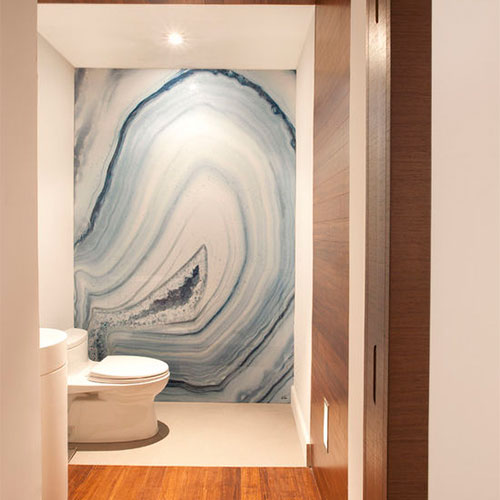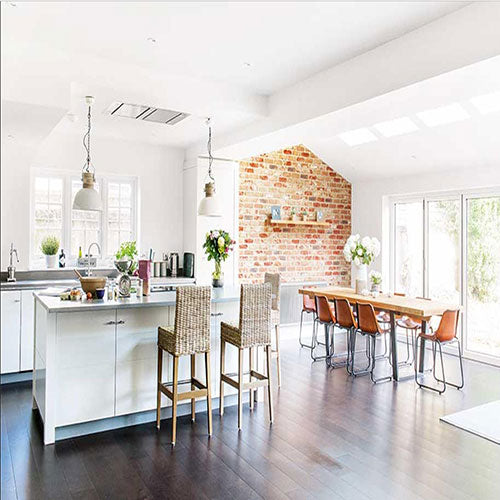How to deal with damp?
Before deal with damp, you’d better know the answers of following questions:
1 How damp form?
Have you you noticed: signs of damp are often more prevalent between the months of October and April, when the temperature outside is lower and more rainfall occurs.
Rainwater ingress through defective roof coverings, blocked and leaking gutters, broken downpipes, damaged masonry, internal leaks or a damaged damp-proof course – a horizontal plastic or slate strip that sits between the external and internal walls and acts as a barrier to stop water being drawn in through the walls – can all increase the levels of moisture indoors, causing wet patches on walls, condensation and mould.
Condensation is one of the most common causes, particularly in homes that are poorly heated and lack sufficient insulation. If you live in an older house, not allowing the structure to ‘breathe’ can also cause damp, while sealing any gaps with modern materials such as cement instead of traditional lime mortar could exacerbate the problem. It’s always best to address the issue using sympathetic materials in keeping with the property’s age for effective results.
2 What different types of damp are there?
2.1 CondensationCondensation is often occurred in older properties. Inadequate ventilation ,where fireplaces and wall vents have been blocked up, all these are a common phenomenon for older house.
Moisture from breathing, washing, drying and cooking, if not removed, will condense on the coldest surface, typically on walls and windows, especially in closed-off, poorly ventilated rooms that are not heated, such as basements & bathroom.
Common symptoms include a mildew smell, black mould, and surface water. The solution is to improve the rate of air changes in affected areas by adding vents, clearing existing ones and fitting extractor fans.
2.2 LeakingMost ceiling mold comes from water moving through a leaking roof. Fortunately, the rainwater route can be identified by a damp patch on the ceiling, or worse, a collapsed ceiling. Find the leak and repair the roof, plus repair faulty gutters or remove any blockages. Double check the patches which presenting inside with paintwork bubbling or wallpaper becoming saturated and peeling off.
2.3 Penetrating dampIf rain for three days or longer, it can quickly saturate external walls. On modern houses, with effective protection and the moisture will be channeled away. Because the moisture should never bridge the cavity to reach inside.If these are missing, defective, or if there’s rubble or mortar in the cavity, water can seep across and create damp patches inside easily. To rectify, identify the faulty building detail and correct it.
In older properties, there is no cavity, it’s with solid walls. Penetrating damp in older properties is likely due to defective walls, such as worn pointing, slipped or broken tiles, or cracked render or cladding. So, maintain and repair the exterior, or alter the cladding material or add another layer.
Take care not to use modern, impermeable finishes on old houses, such as hard sand and cement, which prevent solid walls from ‘breathing’, worsening damp. For basements, external drainage should be improved and the walls and floors tanked.
3 Signs of damp
Stained walls or plaster
- A musty smell
- Warped wood or damp timber (which, if left untreated, can lead to wet rot)
- Peeling paint or wallpaper mould
- Water droplets from condensation
- Salt deposits on walls, leaving a tide mark
There are a number of steps you can take to limit the extent of the problem:
- clear gutters and waterways
- fix leaks
- add more ventilation
- install a dehumidifier
- ensure your damp-proof course is intact
You should also adopt a staged approach to make numerous repairs, starting with the
most severe. Making basic lifestyle changes can also remedy small signs, such as
seasonal condensation build-up.
If you discover any mould, regular cleaning with a mouldicide wash is vital. Follow the manufacturer’s instructions precisely to remove marks from walls and window frames, and dry-clean any upholstery or clothes where spores have grown. Vacuum cleaning or brushing the mould may increase the disruption of the spores, allowing them to spread and enter the air.
In extreme cases, redecorating may be necessary after cleaning and repairing the causes. A good-quality fungicidal paint will help to prevent mould, while a mouldicide solution that can be added to standard emulsion can also be obtained. When wallpapering, use a paste containing a fungicide to prevent further mould growth.
4 How much does it cost to repair?
Costs will vary depending on the amount of work required to rectify the signs of damp, as well as the extent of the problem and the type of damp found. Some smaller repairs, which you can carry out yourself, will be relatively low-cost, while treatments for condensation, such as improving ventilation and buying a dehumidifier, may require a larger initial outlay, but will provide long-lasting results.
Penetrating damp are more likely to cost more to resolve, as a specialist’s expertise may be required. Always get at least three quotes from independent consultants and aim to obtain a recommendation, or look for trade body accreditation before employing help.
>



